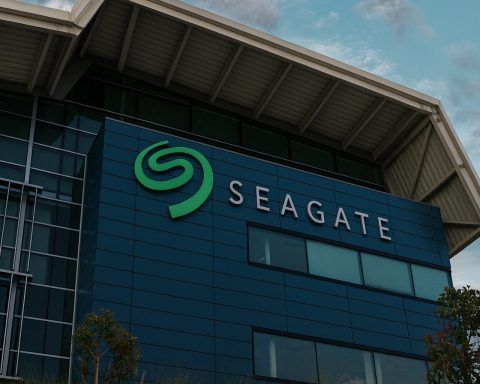- Massive Store Cuts: Orvis (founded 1856) announced it will permanently close 31 full-price stores and 5 outlets (36 total) by early 2026, trimming its U.S. footprint by roughly half [1] [2]. Remaining stores will hold clearance sales on discontinued items as part of a “new chapter” strategy [3] [4].
- Tariffs to Blame: Company executives blamed the “unprecedented tariff landscape” for squeezing profits. April 2025 U.S. tariffs (10–50% on imports) raised Orvis’s input costs by ~16%, disrupting its business model [5]. Orvis makes fly rods in Vermont, but much of its apparel, dog and home goods are imported – and hit by steep duties under the Trump administration [6].
- Back to Its Roots: Orvis is “sharpening our focus on the pursuits at the heart of our heritage: fly fishing and wingshooting,” said President Simon Perkins [7] [8]. The company is phasing out peripheral “lifestyle” lines (home décor, gift items, etc.) and doubling down on fishing rods, hunting gear, guided outdoor experiences and conservation programs [9] [10].
- Retail Turmoil: The Orvis cuts come amid a retail downturn: U.S. retailers announced ≈76,000 job cuts in Jan–May 2025 – a 274% surge year-over-year [11] [12]. Chains like Joann, Macy’s, Rite Aid and Party City also closed stores, and many retailers on tariff-dependent goods have raised prices or shuttered underperforming locations [13] [14]. Economist Andrew Challenger notes “tariffs, … and overall economic pessimism are putting intense pressure on companies’ workforces,” with firms “sending layoff notices” as sales slow [15] [16].
- Market Outlook: Orvis is privately held, but its struggles mirror public peers. For example, Dick’s Sporting Goods (NYSE: DKS) closed around $211.58 on Oct 10, 2025 [17]. Analysts rate DKS a “Buy” with 12‑month target ~$244.83 (+16% upside) [18], reflecting optimism from its recent Foot Locker acquisition and core-business momentum. Sportsman’s Warehouse (Nasdaq: SPWH) closed ~$2.78 [19]; analysts call it a “Strong Buy” with target ~$3.69 (+33%) [20], though its low stock price reflects sector caution [21]. Any relief from tariffs (the U.S. Supreme Court has fast-tracked review of Trump-era trade duties [22]) or rebound in outdoor spending could help Orvis and peers.
Orvis’s announcement on Oct. 10, 2025 took many by surprise. The Boston Globe and Fox Business report that Orvis – one of America’s oldest outfitters – will shutter 36 stores by early 2026 [23] [24]. In a statement, Orvis President Simon Perkins explained that “changes in US trade policy had … caused a sizable shift” in the company’s model [25]. He said the firm must “rescale the business by tightening our assortment and reducing our corporate store footprint” to ensure “a durable brand and model for decades to come” [26] [27]. As Perkins put it, Orvis is “returning to our roots” and will focus on fishing and wingshooting – winding down home goods and other non‑outdoor lines [28] [29]. The flagship store in Manchester, VT will stay open, but many longtime Orvis towns will lose their local retailer, and remaining stores will offer steep “last release” discounts on discontinued items [30] [31].
Tariff pressure is central to Orvis’s retrenchment. Industry trade-journal Retail Dive notes that in April the Trump administration imposed a broad 10% tariff hike (up to 50% on some goods), immediately boosting the average U.S. duty by ~16%. Orvis sources much of its merchandise (apparel, dog beds, giftware, etc.) from overseas, so these duties “disrupted our business model in ways we haven’t faced before,” Perkins said [32]. To avoid passing all costs to customers, Orvis decided to slash costs elsewhere – closing stores, cutting staff, and selling through dealers. (The company has already laid off ~12% of its U.S. workforce over the past year and even listed its 351‑acre VT headquarters for sale [33].) As Retail Dive reports, Orvis will now lean on 550+ independent dealers (local fly shops and big-box partners like Bass Pro/Cabela’s and Sportsman’s) as well as its ecommerce and “Orvis Adventures” travel services [34], making its remaining 33 stores “essential” showrooms rather than profit-drivers.
This pullback fits a broader retail malaise. Experts note that 2025 has seen an unprecedented wave of store closings and layoffs in consumer retail. Challenger, Gray & Christmas – which tracks layoffs – found nearly 76,000 retail job cuts announced in Jan–May 2025 (the second-highest total after government cuts), a 274% jump over the same period in 2024 [35] [36]. Chain after chain has been affected: besides Orvis, fabrics retailer Joann filed bankruptcy and closed hundreds of stores, Macy’s and JCPenney announced major closures, and drugstores (Walgreens/Rite Aid) and fashion chains (Forever 21, Party City) are winding down locations [37] [38]. Tariff-exposed companies have been especially hard hit – even Macy’s revealed some merchandise facing 145% import duties [39] – so many have eaten higher costs, closed underperforming outlets, or shrunk inventories. Andrew Challenger warns that “tariffs … and overall economic pessimism are putting intense pressure on companies’ workforce”, forcing layoffs and belt-tightening [40].
Despite the doom-and-gloom, some analysts view Orvis’s strategy with “cautious optimism.” As TechStock² notes, experts say the cuts are a bid to “save an outdoor retail icon by shedding weight and playing to its strengths.” By concentrating on its loyal fly‑fishing and hunting customers and offloading pricey leases and slow sellers, Orvis aims to stabilize its finances while protecting its heritage [41]. Management insists that popular services – its famed fly-fishing classes, guided trips and lifetime warranty – will continue uninterrupted [42]. The gamble is that a leaner, more focused Orvis can endure even if consumer spending stays soft. But analysts caution that if trade pressures persist or the economy sours, a much smaller store base could limit Orvis’s reach [43]. Conversely, any relief from the trade war (the U.S. Supreme Court is fast-tracking review of the tariffs [44]) or a rebound in outdoor recreation spending could give the storied company a much-needed lift.
In financial markets, Orvis’s shake-up has nudged investors to reevaluate outdoor retailers. Public peers reflect mixed sentiment. Dick’s Sporting Goods (DKS) – a large omni-channel sports retailer – closed at about $211.58 on Oct. 10, 2025 [45] (down ~5% that day) but analysts remain bullish. StockAnalysis reports that 19 Wall Street analysts rate DKS as a “Buy,” with a 12‑month price target around $244.83 (≈16% above the current price) [46]. Dick’s also just completed its $2.4B acquisition of Foot Locker, a deal analysts say will broaden its franchise globally (boosting the stock’s long‑term outlook). Sportsman’s Warehouse (SPWH) – a smaller Utah-based chain of outdoor stores – closed around $2.78 on Oct. 10 [47]. Analysts label SPWH a “Strong Buy” with target $3.69 (≈33% upside) [48], implying investors see value despite near-term headwinds. (TechStock² notes SPWH’s stock has languished near $3 as investors fret about the sector [49].) In short, the market expects an eventual upswing if costs ease or sales recover, but has tempered near-term expectations given the current turmoil.
Forecast & Analysis: Looking ahead into late 2025 and 2026, Orvis’s fortunes hinge on trade policy and consumer trends. If tariffs are rolled back or suppliers can shift more production stateside, Orvis may find breathing room. A pickup in leisure spending on travel and outdoor hobbies would also help – fly fishing is often viewed as recession-resilient among enthusiasts. Management’s focus on core gear and experiences may shore up loyalty and margins. However, this strategy entails risk: Smaller scale means fewer advertising signals and less impulse traffic, potentially ceding customers to competitors like Bass Pro or newcomer digital retailers. Orvis’s long history (nearly 170 years) and strong brand give it a fighting chance, but analysts warn that success is not guaranteed.
On balance, many industry observers see Orvis’s cuts as a necessary recalibration. As one analyst summarized, the company is “betting that getting leaner and sharpening our focus” will allow it to keep serving anglers and adventurers for another century [50]. If so, Orvis might emerge a bit smaller but better aligned with its niche. For investors and customers alike, the key will be monitoring whether tariffs relent and whether outdoor retail can sustain growth. Industry watchers note that if the worst of the tariff storm passes and consumer confidence holds, retailers like Dick’s and Sportsman’s – and by extension Orvis – could see stabilizing sales and eventual recovery [51] [52]. Otherwise, the sector may face more consolidation.
Sources: Reporting from Fox Business, Boston Globe, Retail Dive and Fast Company on Orvis’s announcement [53] [54] [55]; analysis by TechStock² and others on industry trends and company strategy [56] [57]; U.S. stock quotes and analyst forecasts from Yahoo Finance/StockAnalysis for DKS and SPWH [58] [59] [60] [61]. All figures and quotes are current as of Oct. 12, 2025.
References
1. www.bostonglobe.com, 2. ts2.tech, 3. www.bostonglobe.com, 4. ts2.tech, 5. www.fox10phoenix.com, 6. www.bostonglobe.com, 7. www.bostonglobe.com, 8. ts2.tech, 9. ts2.tech, 10. www.bostonglobe.com, 11. www.foxbusiness.com, 12. ts2.tech, 13. www.foxbusiness.com, 14. ts2.tech, 15. www.foxbusiness.com, 16. ts2.tech, 17. stockanalysis.com, 18. stockanalysis.com, 19. stockanalysis.com, 20. stockanalysis.com, 21. ts2.tech, 22. ts2.tech, 23. www.bostonglobe.com, 24. www.retaildive.com, 25. www.bostonglobe.com, 26. www.bostonglobe.com, 27. www.fox10phoenix.com, 28. www.bostonglobe.com, 29. ts2.tech, 30. www.bostonglobe.com, 31. ts2.tech, 32. www.fox10phoenix.com, 33. ts2.tech, 34. ts2.tech, 35. www.foxbusiness.com, 36. ts2.tech, 37. www.foxbusiness.com, 38. ts2.tech, 39. ts2.tech, 40. www.foxbusiness.com, 41. ts2.tech, 42. ts2.tech, 43. ts2.tech, 44. ts2.tech, 45. stockanalysis.com, 46. stockanalysis.com, 47. stockanalysis.com, 48. stockanalysis.com, 49. ts2.tech, 50. ts2.tech, 51. stockanalysis.com, 52. stockanalysis.com, 53. www.bostonglobe.com, 54. www.retaildive.com, 55. www.foxbusiness.com, 56. ts2.tech, 57. ts2.tech, 58. stockanalysis.com, 59. stockanalysis.com, 60. stockanalysis.com, 61. stockanalysis.com










